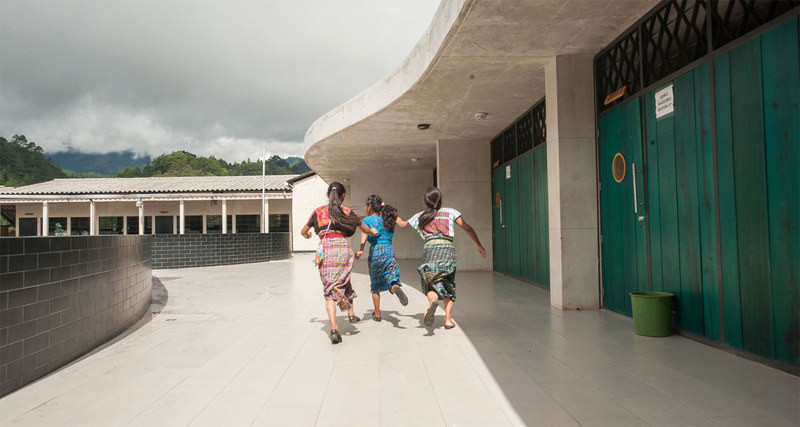In a class of its own
31 Oct 2014 - 18 Jan 2015

School in Nebaj, SolisColomer y Asociados Arquitectura, San Juan Cotzal u.a., 2012; © SolisColomer y Asociados Arquitectura, Mariano Vadillo
IN A CLASS OF ITS OWN
Schools worldwide
31 October 2014 - 18 January 2015
Schools are important for everyone – not just pupils, but also parents, teachers and politicians. The school reforms of recent years mean that we need new spaces for small groups, for individual learning, computer workstations, and spaces for informal meeting and for eating. This requires a built and designed environment suited to our twenty-first century educational concepts and methods. Only if schools become places for learning and living, where everyone takes pleasure in learning, can schools contribute to the paradigm shift from an industrial to a knowledge society.
"In a class of its own" presents contemporary school buildings in Africa, Asia, Europe and Latin America. These are buildings that harmonise exceptionally well with regional architecture styles and ways of life or have been created with the active participation of learners and teachers. The spectrum ranges from a one-classroom school on boats, to climate-friendly mud or bamboo schools, to high-tech buildings (almost) without walls.
This exhibition shows 20 international examples built since the year 2000 alongside selected pioneering school buildings that exemplify the development of school architecture mainly in the twentieth century. These include Walter Spickendorff's Waldschule in Berlin, Arne Jacobsen's Munkegårdskole in Gentofte, Hassan Fathy's school in Fares, Decio Tozzi's Escola Jardim Ipé near São Paulo, and the Waldorf ensemble in Stuttgart.
Exhibition Design
This exhibition was developed and designed with students and teachers in the departments of architecture and interior architecture at University of Stuttgart, University of Innsbruck, and Hochschule für Technik Stuttgart.
Schools worldwide
31 October 2014 - 18 January 2015
Schools are important for everyone – not just pupils, but also parents, teachers and politicians. The school reforms of recent years mean that we need new spaces for small groups, for individual learning, computer workstations, and spaces for informal meeting and for eating. This requires a built and designed environment suited to our twenty-first century educational concepts and methods. Only if schools become places for learning and living, where everyone takes pleasure in learning, can schools contribute to the paradigm shift from an industrial to a knowledge society.
"In a class of its own" presents contemporary school buildings in Africa, Asia, Europe and Latin America. These are buildings that harmonise exceptionally well with regional architecture styles and ways of life or have been created with the active participation of learners and teachers. The spectrum ranges from a one-classroom school on boats, to climate-friendly mud or bamboo schools, to high-tech buildings (almost) without walls.
This exhibition shows 20 international examples built since the year 2000 alongside selected pioneering school buildings that exemplify the development of school architecture mainly in the twentieth century. These include Walter Spickendorff's Waldschule in Berlin, Arne Jacobsen's Munkegårdskole in Gentofte, Hassan Fathy's school in Fares, Decio Tozzi's Escola Jardim Ipé near São Paulo, and the Waldorf ensemble in Stuttgart.
Exhibition Design
This exhibition was developed and designed with students and teachers in the departments of architecture and interior architecture at University of Stuttgart, University of Innsbruck, and Hochschule für Technik Stuttgart.
